In 2021, Academy Moving People and Images (AMPI) and Finnish Film Affair (FFA) started a collaboration for a new residency programme. As part of the residency, FFA provides an ‘industry residency scheme’ for a filmmaker from AMPI alums. This unique residency opportunity offers the participant a chance to develop industry-related skills, skills that a filmmaker needs once they start attending film markets and promoting their talent. The participant can follow FFA’s programme, showcase day, and network at the event.
The recipient of the fourh industry residency was AMPI alumna Mariia Solodiankina. The filmmaker was chosen for this residency by the Head of Finnish Film Affair & Nordic Flair, along with AMPI Founder & Artistic Director Erol Mintaş, and AMPI advisory board members Sanna Kultanen and Christopher Wessels.

AMPI FILMMAKER IN RESIDENCE: MARIIA SOLODIANKINA
Mariia Solodiankina is a Finland-based fiction and documentary filmmaker. Mariia explores themes like permaculture, somatic body practices, and socio-environmental issues. Her films emphasize the intricate connections between humans and non-humans, advocating for sustainable practices and community empowerment.
Mariia’s Reflection & Insights on the residency at Finnish Film Affair.
The Finnish Film Affair is a busy, rewarding, and stimulating experience, and this year I had the chance to live right in the middle of it as part of the Moving People and Images Residency as a Filmmaker in Residency. It wasn’t just about attending events—it was about being carried along by the flow of conversations, faces, ideas, and the small surprises that happen when you least expect them.
Future Retreat and Familiar Faces
The week started with the Future Retreat at HIFF office, where I once again met the representatives of Women in Film and Television Sweden. Their presence felt grounding—like running into an old friend in a crowded room. I just arrived from the Nordisk Panorama in Malmo where my film Tales from the Soil was screened, and it felt like a natural continuation of the journey. The Future Workshop was an interesting way to hear the troubles, worries, and ideas for the future of industry and society in general. The year 2024 brought a lot of challenges to the industry, and the pressure could be felt in the air, together with the desire to discover new ways, and find new collaborations and spaces.
It reminded me how festivals are never just one isolated moment; they spill into each other, leading a path forward.
Advice: visit smaller workshops overcrowded receptions to get to know people closely
Life Between Lunches, Snacks, and Stages
So much of the festival happens at tables—over quick snacks, coffees, and lunches where conversations stretch longer than the food on the plate. Networking sounds like such a formal word, but often it was simply sharing a laugh, exchanging stories, or nodding along as someone opened up about their project, or checking on the people you haven’t seen for a while.
And I didn’t skip a single thing. My calendar was crammed and I loved it:
- Future retreat at HIFF office
- Opening Reception at Pohjoisesplanadi
- ACTORS IN THE SPOTLIGHT: FIND YOUR TALENT at Amos Rex
- FFA Gaming x Film Matchmaking at Sokos
- Sauna networking at Löyly
- Party f-weird (and yes, it was weird)
- Workshop with Design Directors on AI
- Lunch at Swedish Embassy
- Dinner at Helsinki City Hall
- Pitches, pitches, pitches at Amos Rex
Each one had its own flavor. The pitching sessions I enjoy the most – great way to learn about other people’s ideas, adjust my own pitch and generally get to know colleagues.
Advice: familiar people can introduce you to new people; it feels much more comfortable than introducing yourself to a stranger
Pitching and Listening
Pitching my own project was a rush—I won’t pretend otherwise. The pitching session started right after lunch in the Swedish Embassy, and I had around 10 minutes to run through the city center to be on time. However, I was quite well prepared: a week or so before the pitching, FFA organized a one-on-one pitching with a professional, who gave me constructive feedback and great suggestions for improvement. I also had my short Tales from the Soil travelling the festivals at the time, and for the pitching session I presented a feature continuation of the short film and already had a 3-minute sample to portray a choice for the aesthetics and the visual language.
Practical note: for pitching you’re given a record time of 8 minutes (F-weird had 2 minutes, other films around 5-8 minutes), and you’re allowed to play a film sample of up to 5 minutes.
But the real gift was listening to everyone else’s pitches. Sitting in the audience, I caught myself taking mental notes all the time, not only hearing their stories but also watching how they carried themselves, how they translated passion into words. F-weird pitching session was very funny, and it was a great example of how to present strange experimental dark horror or comedy.
Advice: check your email and don’t miss the information, some of the things e.g. registration at the workshop or confirmation of the time require immediate action. Save some time a week before FFA to plan and register for all the needed time slots.
Silence and the Sauna
The sauna event was at the end of the week, paired with the award ceremony for the best pitches. For the people who came directly from the Nordisk Panorama, it was a well-deserved rest, and there was no point in trying to do business; people were relaxing, celebrating and enjoying the sauna and the sea dip. I felt that Wednesday-Thursday are the most important days, and then by the end of FFA people are too tired from this rhythm, and prefer recreational or slowly educational activities. Sauna is a Gala of Finnish Film Affair, just instead of dressing up, you’re dressing out.
Carrying It Forward
What struck me most was the team behind FFA. They made me feel welcome, including me as part of something bigger. It’s easy to underestimate how much that matters until you’re in the middle of it, grateful that someone thought of you, guided you, and made space for you. Afterwards we had a private talk about what worked and what didn’t, to empower the next generation of filmmakers.
Looking back, I do hope that in the future, residents like me can also be part of the matchmaking process after pitching—because those connections are precious and fleeting.
And yes, I can’t help but notice the lack of diversity that still lingers in these spaces. We need more voices, more colors, more stories. That’s not just a wish—it’s a necessity.
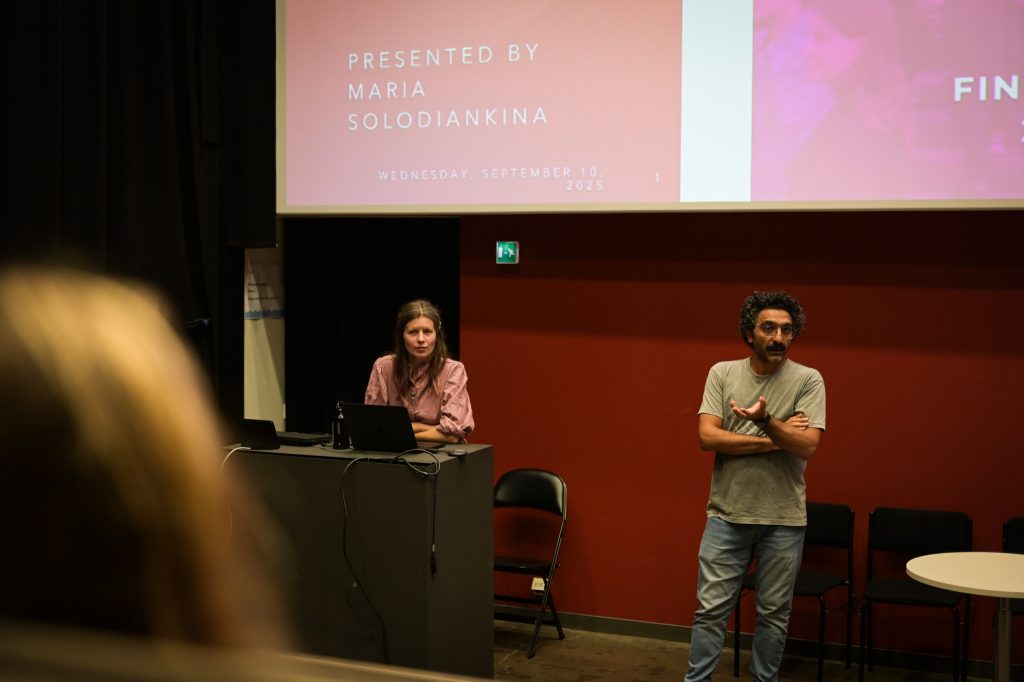


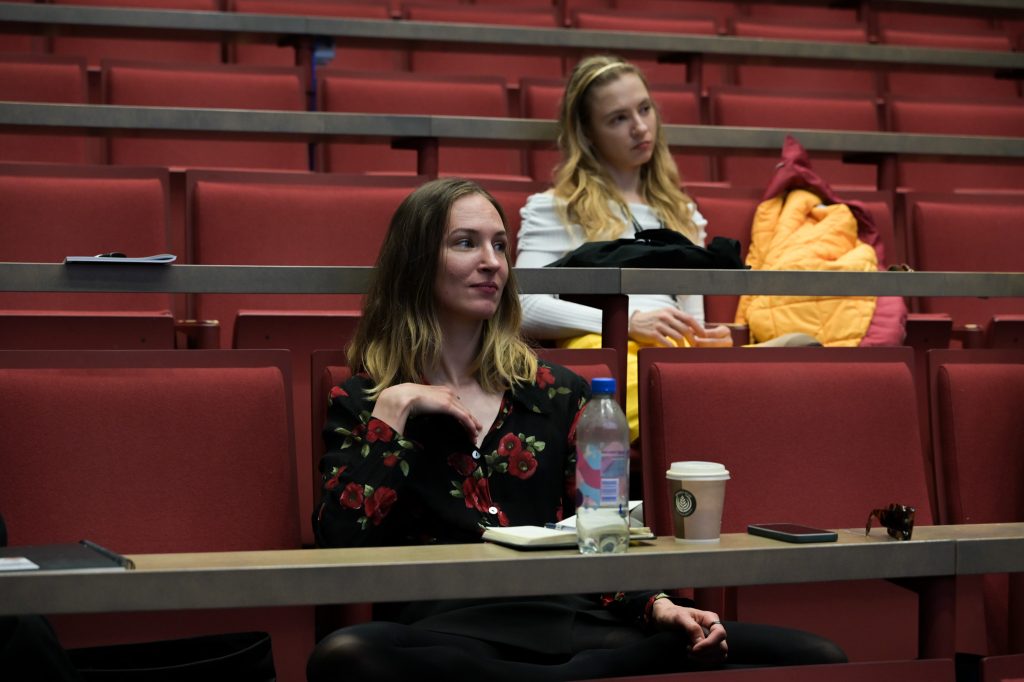
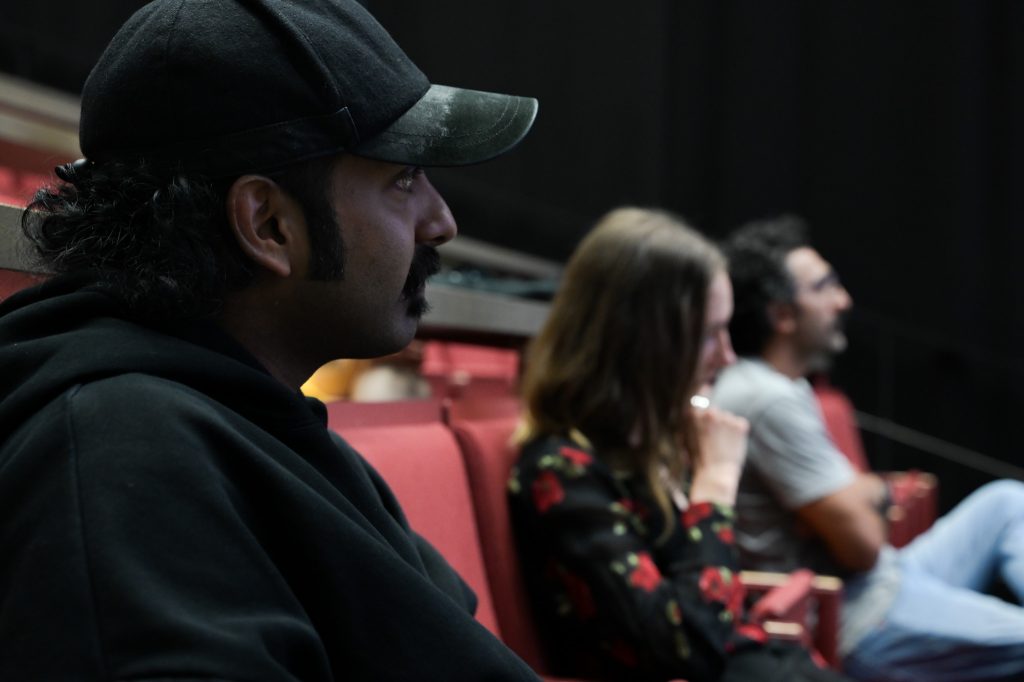
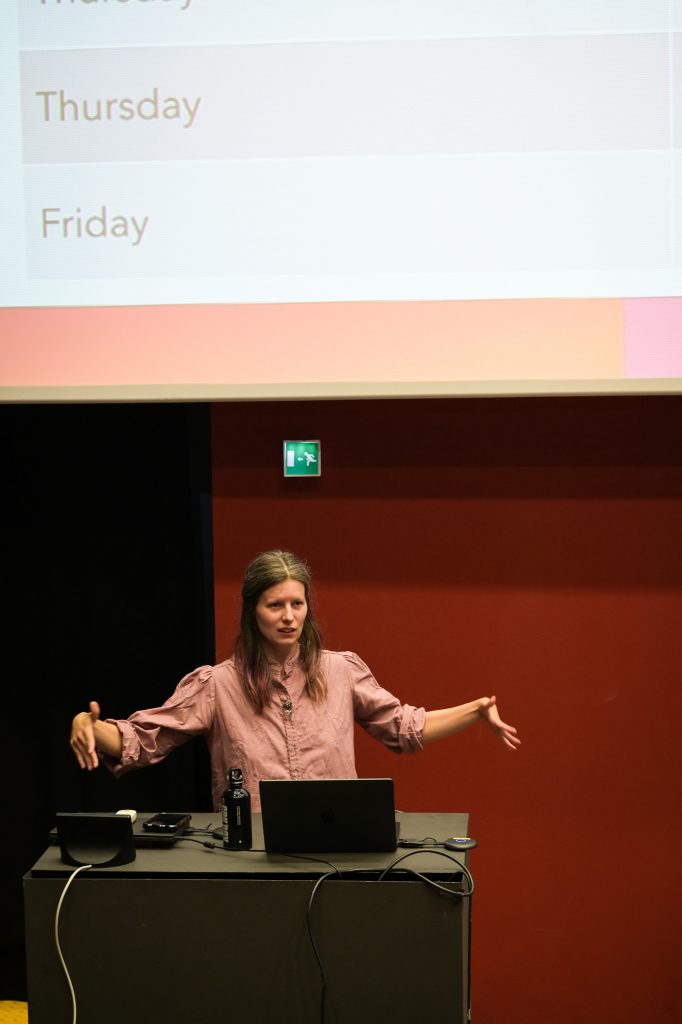
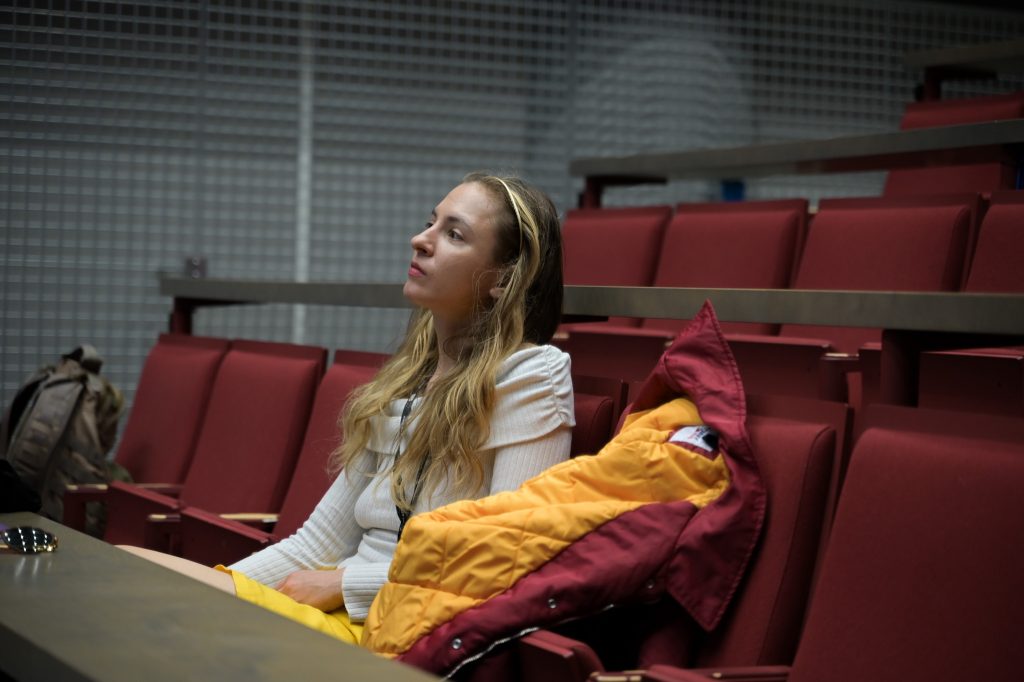

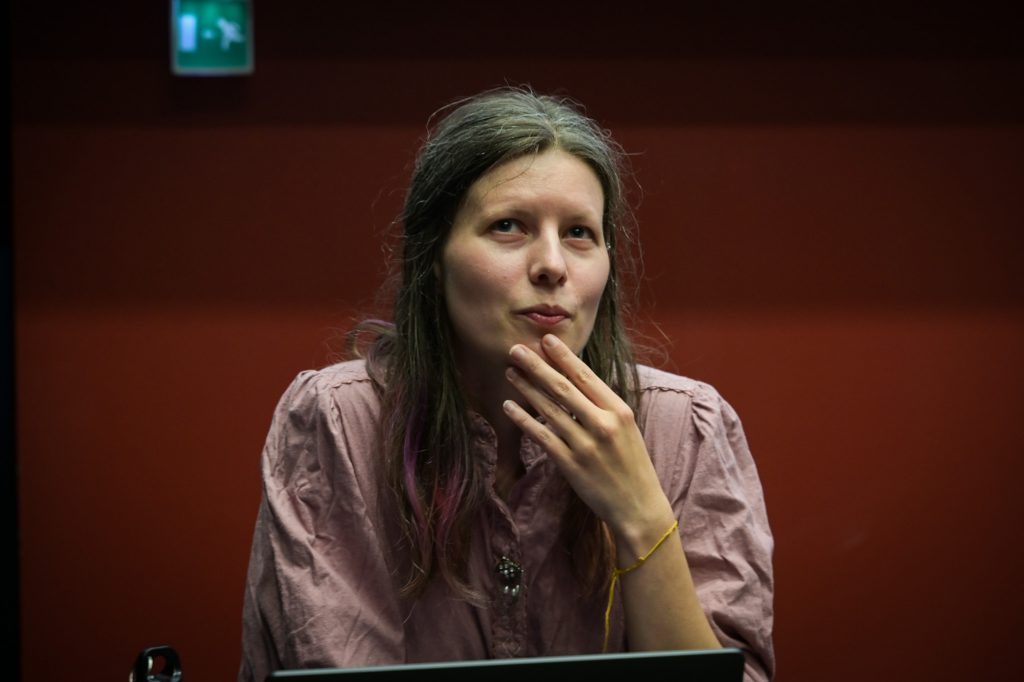
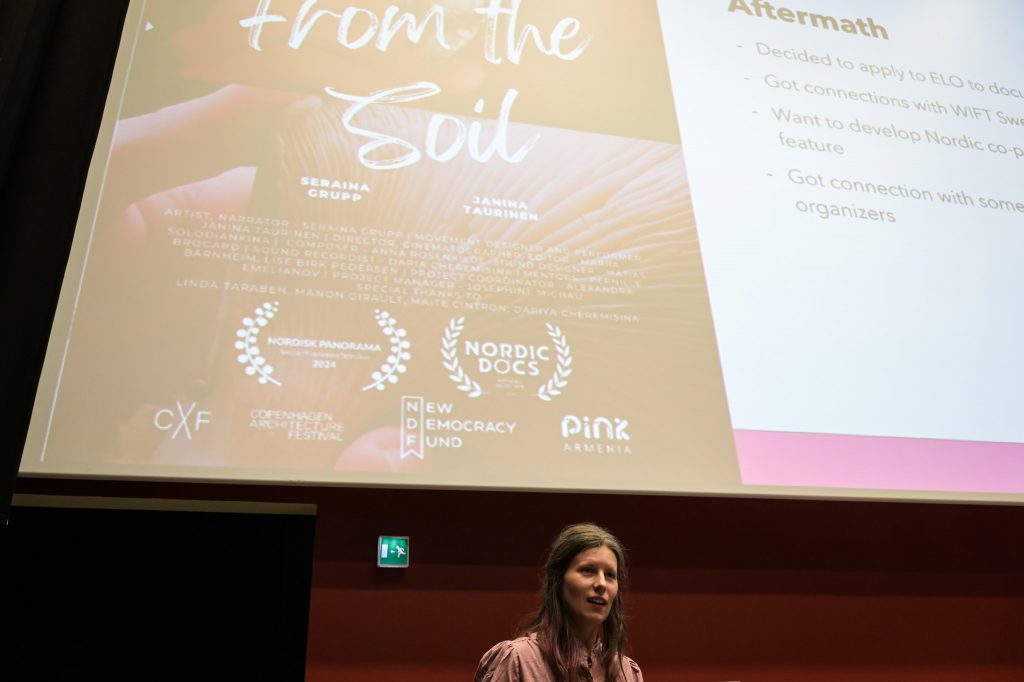


Presentation about Maria’s experience took place at Cultural Center Caisa on 10.09. Photos by Samra Sabanovic.